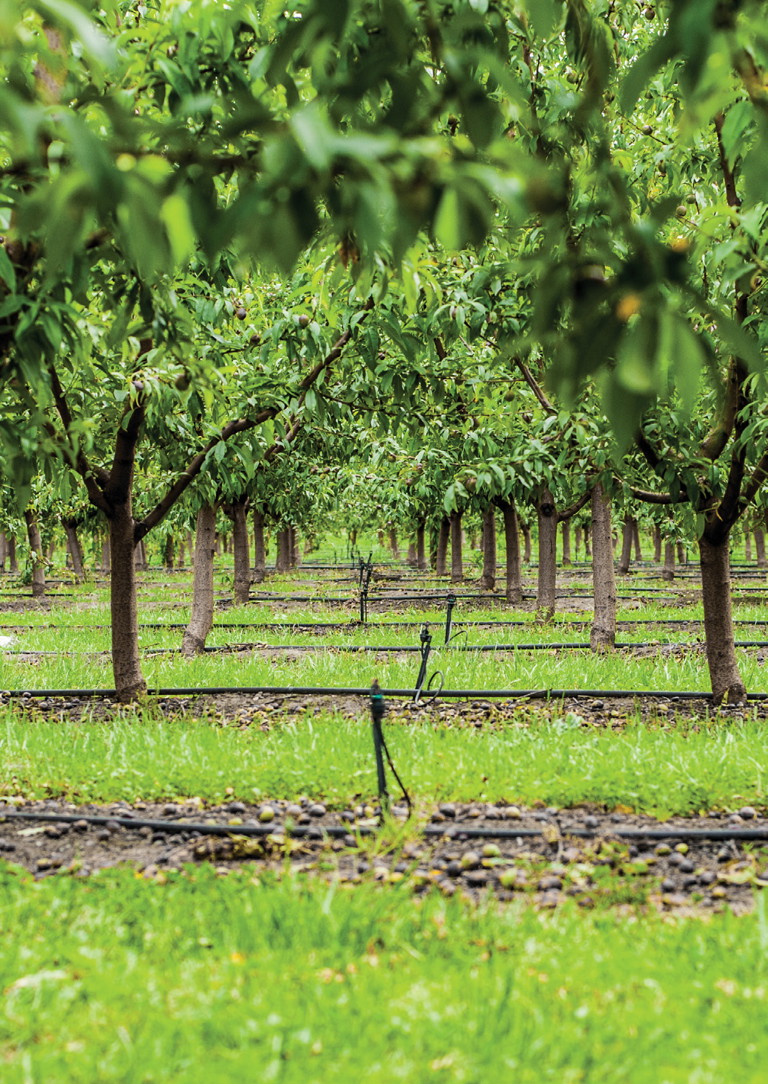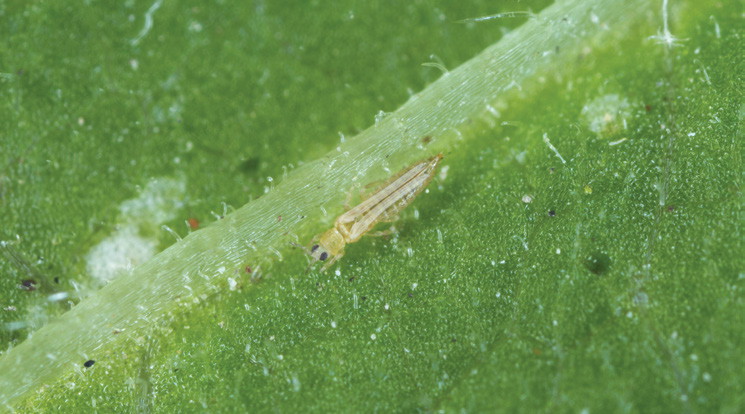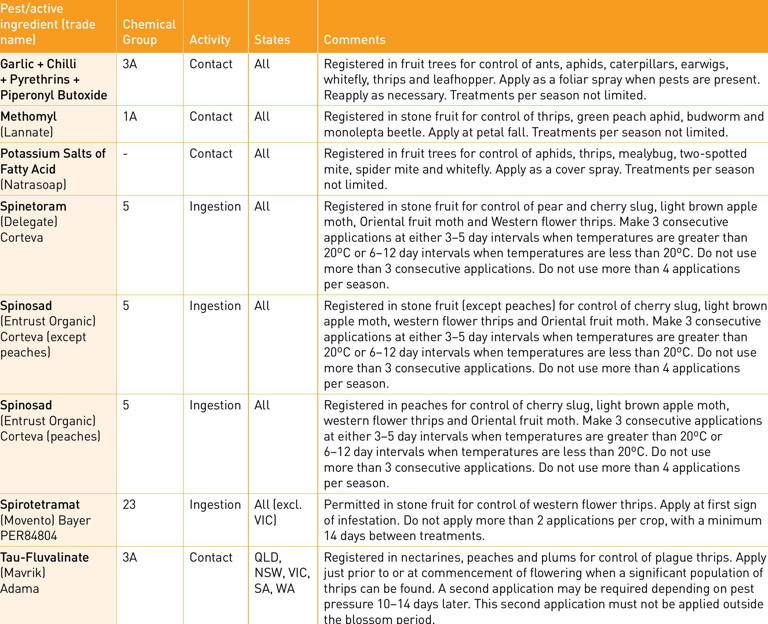
As weeds act as reservoirs for thrips; their management is essential.
Integrated pest management
strategy
for western flower thrips control


BY SUSAN CROSSLEY
VALUE CHAIN
FACILITATOR,
STONEFRUIT
Controlling established Western Flower Thrips (WFT) populations will require timely insecticide application. However, reliance on chemical control only for WFT is problematic due to resistance.
It is recommended to develop an integrated pest management strategy combining elements of cultural control, biological and chemistry to effectively manage WFT.
The following control strategies are taken from the Department of Primary Industries and Regional Development website and Orchard Plant Protection Guide for Deciduous Fruits in NSW 2021–22.
Weed control
As weeds act as reservoirs for thrips; their management is essential. Thrips are particularly attracted to flowering weeds as they feed on pollen. Surveys of orchards in the Perth Hills show that clover, plantain, fat hen, flatweed, capeweed and wireweed host the highest numbers of WFT.
However, be careful if you spray weeds with herbicide. As the weeds die off, thrips can move off the weeds onto your crop. You may want to treat weeds with insecticide at the same time.
Keeping ground covers mown short throughout the year is another control option, but do not mow when fruit trees are in blossom.
WFT is a pest that readily acquires resistance to insecticides.
Biological
Another effective strategy is to incorporate biological control into your pest management. There are several natural predators of thrips commercially available in Australia. These include predatory mites that feed on the thrips larvae (Transeius montdorensis, Neoseiulus cucumeris), or pupae (Hypoaspis spp. also known as Stratiolaelaps Goodbugs.org.au for more information as species have specific crop, temperature, and humidity requirements. However, these natural predators are unlikely to provide full control of WFT. spp.). Two species of pirate bug (Orius spp.) that feed on larval and adult thrips are also available. Consult
Chemical options
WFT is a pest that readily acquires resistance to insecticides. For this reason, it is important to avoid dependence on a single chemical.
One strategy is rotating chemical groups so that the target is not being repeatedly treated with the same type of chemical.
See Table 1 for the chemicals listed in the Strategic Agrichemical Review Process (SARP) as currently registered for WFT in stone fruit to help you choose products from different chemical groups when seeking to rotate chemicals in a program.
Spray applications are only effective when thrips are actively feeding as larvae or adults. The application of a series of pesticide sprays increases the likelihood of larvae and adults coming into contact with the chemical. Keep in mind that the rate that WFT completes a life cycle depends on temperature. At higher temperatures thrips develop more quickly requiring a shorter length of time between sprays.
TABLE 1. WFT MANAGEMENT — CHEMICAL LIST

If you are seeing resistance to chemicals you are currently using, it is recoverable through a targeted spray process. Spraying per the label instructions is essential.
Product labels incorporate a Resistance Warning and many include crop-specific instructions relating to the number of applications permitted for use in that crop.
Complying with resistance management instructions will help to minimise resistance.
Hints for successful chemical control:
• Take action before thrips become established.
• Reserve the insecticides recommended for the control of western flower thrips until you find it in your crop.
• Monitor your crop. If thrips are not present, then there is no need to spray.
• Use small droplets (less than 100 microns) rather than large droplets, as these are more effective. Droplet size can be checked using water sensitive paper.
• Spray in the early morning or mid to late afternoon. The leaves stay wet longer at these times, which maximise exposure of the thrips to the insecticide.
• Control thrips prior to flowering where possible. When thrips enter the flowers, they are difficult to contact with insecticides as they are hidden.
• Check the pH of the water used in spraying as pH affects the activity of insecticides. A neutral pH is best (6.5–7.0).
What’s coming next
Currently, there are limited chemical options with unique actives. We have been in contact with a chemical company and HIA and understand work is being done for more chemicals to come on board with new actives, however it is a lengthy process that happens over years. We will keep you informed as we learn of new solutions to assist you.
MORE INFORMATION
For more information about western flower thrips management, visit agric.wa.gov.au/fruit/chemical-control-western-flower-thrips
You can download a copy of the Orchard Plant Protection Guide for Deciduous Fruits in NSW at dpi.nsw.gov.au/agriculture/horticulture/ pests-diseases-hort/information-formultiple-crops/orchard-plant-protectionguide
